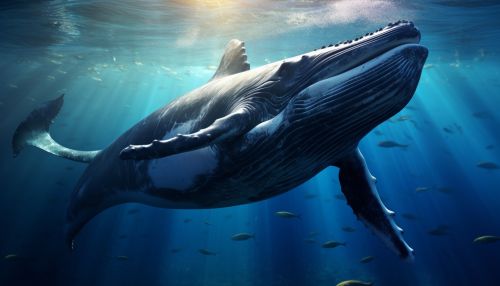Acoustic Communication in Cetaceans
Introduction
Acoustic communication in cetaceans involves the use of sound signals to convey messages between individuals of the same species. This form of communication is vital for these marine mammals, as it aids in navigation, hunting, and social interaction. Cetaceans, which include whales, dolphins, and porpoises, have developed complex vocalizations and echolocation capabilities to survive in their underwater environments.


Acoustic Signals
Cetaceans produce a variety of acoustic signals, including clicks, whistles, and songs. These signals vary in frequency, duration, and intensity, and are used for different purposes.
Clicks
Clicks are short, intense sounds that are primarily used for echolocation. Cetaceans emit a series of clicks and listen for the echoes to determine the location and distance of objects in their environment. This ability is crucial for navigation, foraging, and predator avoidance.
Whistles
Whistles are tonal sounds that are often used for social communication. They can convey a wide range of information, such as individual identity, group membership, and emotional state. Some species, like bottlenose dolphins, even have signature whistles that are unique to each individual.
Songs
Songs are complex sequences of sounds that are often produced by male cetaceans during the breeding season. These vocalizations can last for hours and are thought to serve a role in mate attraction and territorial defense.
Sound Production
Cetaceans produce sound through a specialized structure in their respiratory system called the phonic lips. Air is forced through this structure, causing it to vibrate and produce sound. The sound is then focused and directed by the melon, a fatty organ in the forehead.
Sound Reception
Cetaceans receive sound through their lower jaw, which conducts the sound waves to the middle ear. The sound is then transmitted to the inner ear, where it is converted into electrical signals that are sent to the brain for interpretation.
Acoustic Behavior
Cetaceans exhibit a wide range of acoustic behaviors, from simple calls to complex songs. These behaviors can be influenced by a variety of factors, including social context, environmental conditions, and individual characteristics.
Foraging
During foraging, cetaceans use echolocation to locate and capture prey. They emit a series of clicks and listen for the echoes to determine the location, distance, and even the size and type of the prey.
Cetaceans also use echolocation for navigation, especially in murky waters or at night when visual cues are limited. By emitting clicks and listening for the echoes, they can map their surroundings and avoid obstacles.
Social Interaction
Acoustic communication plays a crucial role in the social interactions of cetaceans. They use a variety of vocalizations to maintain group cohesion, establish dominance, and coordinate activities. In some species, individuals can even recognize each other's voices.
Impact of Noise Pollution
Noise pollution in the ocean, caused by activities such as shipping, oil drilling, and military exercises, can interfere with the acoustic communication of cetaceans. High levels of noise can mask their vocalizations, disrupt their behaviors, and even cause physical harm.
Conservation Efforts
Conservation efforts are underway to reduce noise pollution and protect the acoustic habitats of cetaceans. These include the development of quieter ship designs, the establishment of marine protected areas, and the implementation of noise regulations.
